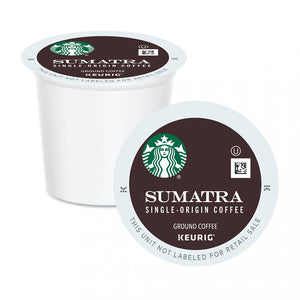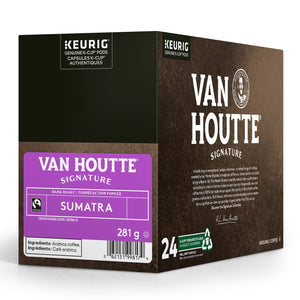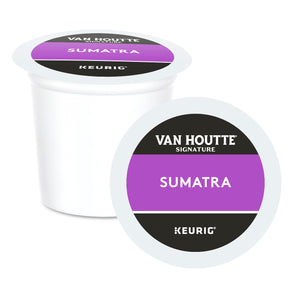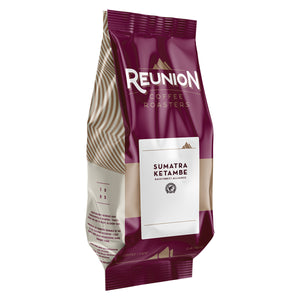The Lowdown on Low Acidity in Coffee Beans
Coffee lovers often find themselves on a journey to discover the perfect cup of joe. This journey can lead to various avenues, from exploring different brewing methods to trying beans from different regions. One critical factor that significantly influences the flavour profile of coffee is its acidity. While high-acidity coffee can be vibrant and bright, low-acidity coffee offers a smooth and mellow experience that many coffee drinkers prefer. In this blog post, we’ll dive into what low acidity in coffee beans means, its benefits, and how you can enjoy the best low-acid brews.

What is Coffee Acidity?
Acidity in coffee refers to the bright, tangy, and sometimes fruity notes that coffee can exhibit. It's a desirable trait for many coffee enthusiasts as it adds complexity and liveliness to the flavour profile. However, acidity is often confused with the pH level of coffee, which measures how acidic or basic the coffee is on a scientific scale. When we talk about low acidity in coffee, we’re focusing more on the flavour profile rather than the actual pH level.
Benefits of Low-Acidity Coffee
-
Gentler on the Stomach: High-acid coffee can be harsh on the digestive system, especially for individuals with sensitive stomachs or acid reflux issues. Low-acid coffee is easier on the stomach, making it a better option for those who experience discomfort after drinking coffee.
-
Smooth Flavour: Low-acid coffee tends to have a smoother, more mellow flavour profile. This can make for a more enjoyable and less sharp drinking experience, especially for those who prefer a less tangy taste.
-
Versatility: The smoothness of low-acid coffee makes it versatile for various brewing methods, from drip coffee makers to French presses. It can also be an excellent base for flavoured coffee drinks.

Factors Influencing Coffee Acidity
Several factors influence the acidity levels in coffee beans, including:
-
Bean Origin: Coffee beans from different regions have varying acidity levels. Beans from Brazil, Sumatra, and other parts of Southeast Asia are known for their lower acidity; compared to beans from Ethiopia or Kenya, which are typically more acidic.
-
Roast Level: The roast level significantly impacts coffee acidity. Darker roasts tend to have lower acidity because the roasting process breaks down the acids in the beans. If you prefer low-acid coffee, look for medium to dark roast beans.
-
Processing Method: The way coffee beans are processed can also affect their acidity. Wet-processed (washed) beans generally have higher acidity, while dry-processed (natural) beans tend to have lower acidity.
Best Low-Acidity Coffee Beans
If you’re on the hunt for low-acidity coffee beans, here are some excellent options to consider:
-
Sumatran: Known for its full body and low acidity, Sumatra offers earthy and chocolatey notes, making it a favourite among low-acid coffee enthusiasts.
-
Brazilian: These beans are smooth and mild with nutty and chocolatey flavours, boasting low acidity that’s perfect for a mellow cup of coffee.
-
Mexican: Mexican beans are often characterized by their mild flavour and low acidity. They are a great choice for those seeking a balanced and smooth coffee experience.

Brewing Tips for Low-Acidity Coffee
To maximize the smoothness and reduce the acidity in your coffee, consider the following brewing tips:
-
Cold Brew: Cold brewing significantly reduces the acidity in coffee, resulting in a smoother and more refreshing cup. The cold brew method involves steeping coffee grounds in cold water for an extended period, usually 12-24 hours.
-
French Press: The French press method allows for a longer extraction time, which can help mellow out the acidity. Use a coarse grind and steep the coffee for about 4 minutes before pressing.
-
Add Milk or Cream: Adding milk or cream can help neutralize the acidity in coffee, creating a smoother taste. This is particularly helpful for those who find black coffee too acidic.

Low-acidity coffee beans offer a smooth and mellow alternative to their high-acid counterparts. Whether you have a sensitive stomach or simply prefer a less tangy flavour profile, there are plenty of low-acid options to explore. From choosing beans from regions known for low acidity to experimenting with different brewing methods, you can enjoy a delicious and gentle cup of coffee that suits your taste. Happy brewing!











2 comments
Love this store. My daughter got me started. And I buy from there all the time. And they rush my orders up quick. Thank you
Hi
I recently found your excellent article. Your point of view caught my eye.
I’ve also written a piece on “How to make coffee less acidic?” that might interest your readers. I’ve included a link to your article in mine as a relevant external resource.
If you think it would be a good fit for your site, I’d be happy to share a link to your article on my blog as well.
Thanks for your time and consideration.